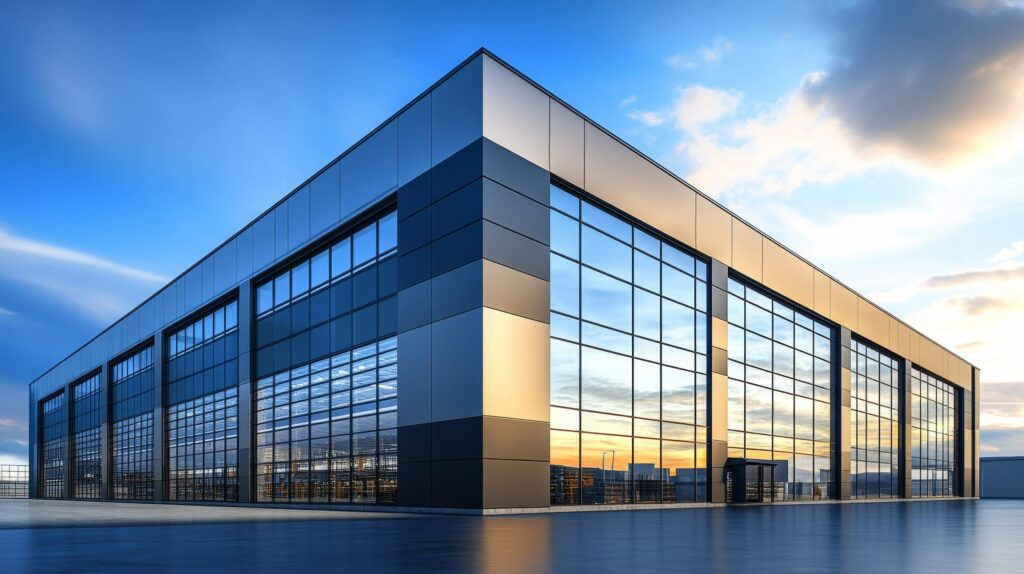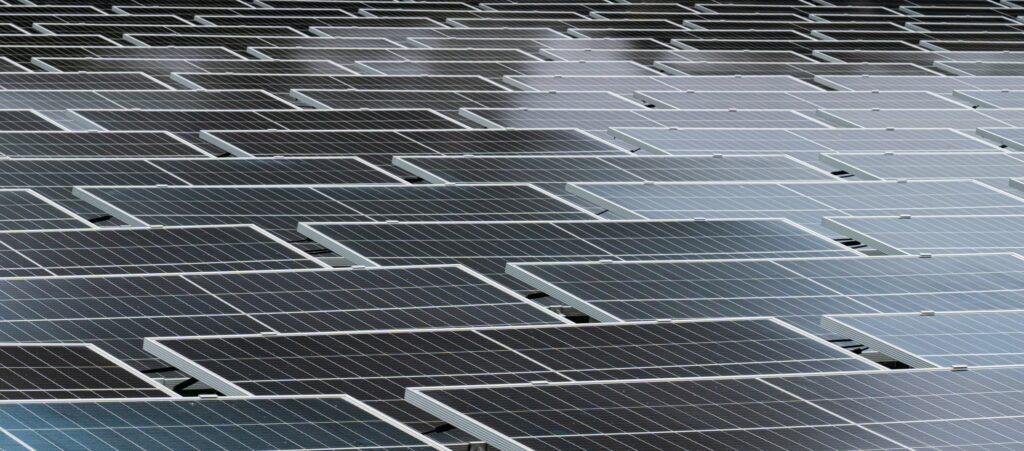Green buildings are at very heart of the UK’s drive towards net zero emissions.
With 25% of the UK’s greenhouse gas emissions tied to the built environment, and the construction sector responsible for around 60% of the UK’s total waste production, prioritising sustainability in both new and existing buildings is vital if the country is to meet its 2050 net zero targets.
Much of the focus has fallen on commercial properties that present a unique blend of challenges and opportunities when it comes to meeting these targets.
From their design and construction to retrofitting opportunities and ongoing management, there are plenty of ways in which commercial properties can become greener. And in many cases, the merits can significantly outweigh the costs.
Embracing a move to making building more sustainable isn’t just making a moral choice, it can be a critical part of your business strategy. Green buildings can drastically cut operating costs and boost tenant satisfaction, as well as helping the planet.
Here, we’ll delve into the opportunities for sustainability in commercial properties, highlighting the latest practices and regulations that are shaping the future of green buildings and sustainable commercial spaces.
What is ESG (Environmental, Social and Governance) in commercial property?
ESG has become a key vehicle driving sustainable change across the commercial property sector.
Standing for Environmental, Social, and Governance, ESG is a framework that evaluates a business’s impact on society and the environment. By demanding transparency and accountability, it is used to assess exactly how well a business prioritises these three aspects within its overall operations and model, with sustainability being a major focus.
In the case of commercial properties specifically, ESG emphasises best practices in the following ways:
- Environmental: Reducing carbon footprints, boosting energy efficiency, and adopting sustainable building practices.
- Social: Ensuring that properties positively impact communities, promote inclusivity, and uphold the health and well-being of occupants and surrounding neighbourhoods.
- Governance: Upholding transparent, ethical management practices and adhering to key regulatory standards.
As net zero demands heighten, these principles are increasingly shaping the future development and management of commercial properties, ensuring that they are not only financially sound but also make a meaningful contribution to society and the environment.
Why is commercial property more valuable when it’s green?

There are many reasons why green buildings are more attractive to and valuable for investors lenders, building owners and tenants alike. In the case of commercial properties, some of the key merits include:
- Lower operating costs: Green buildings typically feature advanced energy and utilities efficiency systems that can drive down expenses. This translates into lower costs and higher profits, making properties more attractive to both investors (potentially greater returns) and tenants (potentially lower costs).
- Higher rental premiums and reduced vacancy rates: With tenants increasingly scrutinising the sustainability credentials of a commercial property to align with their own climate targets, green buildings are in increasingly high demand. As a result, sustainable commercial properties are less likely to be left vacant, whilst also potentially being able to command higher rental rates.
- Reduced risk and improved resilience: Given that sustainable buildings therefore have greater appeal in the competitive commercial real estate market, investors are likely to be taking on less risk when acquiring green properties. Not only will they enjoy improved marketability, but such properties will also be more futureproofed in the face of evolving regulations and climate policies, ensuring they retain their value over time.
- Financial benefits: It should also be noted that commercial properties with strong ESG credentials will be better placed to tap into sustainable financing opportunities. Further, lenders are likely to experience lower risk of default rates, while investors may also achieve improved ROI.
The business case is therefore clear: embracing sustainability in commercial property not only meets the modern demand for green spaces, but may also represent a sound financial strategy, providing futureproofed value and performance in a rapidly evolving real estate landscape.
What EPC (Energy Performance Certificate) requirements are there for a commercial property?
As well as understanding the meaning of ESG, it’s also important to understand commercial EPC requirements and sustainability legislation.
Energy Performance Certificates (EPCs) play a crucial role in evaluating the efficiency of a property. Indeed, EPCs provide an easy way to determine a building’s energy efficiency and sustainability credentials at a glance, with properties given a rating between A (most efficient) and G (least efficient).
As a result, EPCs are incredibly useful for potential investors, tenants and lenders, helping them to quickly determine aspects such as the potential cost of energy for the property and its associated carbon emissions.
In the UK, an EPC is mandatory for all commercial properties under the following conditions:
- When renting or selling the property.
- Upon completing the construction of a new building.
- If there are changes in building use that affect its heating, air conditioning or ventilation (HVAC) systems.
To obtain an EPC for a commercial property, you need to arrange for a property assessment to be carried out. Critically, the type of assessor required varies depending on the building’s unique circumstances, complexity and features. However, the government offers a tool to support this process, which can be found here.
There are also some cases where a commercial EPC is not required. For more details on these exemptions, refer to the official government guidance here.
Are commercial EPCs and residential EPCs different?
The simple answer is yes, they are. EPCs assess energy efficiency in homes, while commercial EPCs evaluate non-residential buildings like shops, schools, or offices.
Naturally, the requirements are different. Commercial EPCs are tailored for business properties and typically involve more extensive recommendations. Unlike residential EPCs, which suggest minor improvements, commercial EPCs may involve larger-scale changes.
Equally, the grading system differs in commercial EPCs, a higher score indicates lower efficiency, as shown in the table below:
| Grade | Commercial EPC score | Residential EPC score |
| A | 0-25 | 92-100 |
| B | 26-50 | 81-91 |
| C | 51-75 | 69-80 |
| D | 76-100 | 55-68 |
| E | 101-125 | 39-54 |
| F | 126-150 | 21-38 |
| G | Over 150 | 1-20 |
What are the MEES (Minimum Energy Efficiency Standards)?
The Minimum Energy Efficiency Standards outline exactly which EPC ratings commercial properties must achieve before they can be used for lettings and tenancies.
From 1 April 2018, landlords of properties covered by MEES were not allowed to renew or grant new tenancies for buildings with an EPC rating below E, barring exemptions. Then, since 1 April 2023, landlords have been prohibited from continuing to let properties with an EPC rating lower than E, barring exemptions.
In other words, most commercial properties with an EPC rating of F or G can no longer be occupied by tenants. And now, looking ahead, the sustainability requirements for commercial properties are set to tighten further.
As it stands, the minimum EPC rating for commercial properties will rise to C in 2028, and then further increase to B by 2030. Owing to these demands, the government estimates that approximately 85% of rented commercial properties across England and Wales will have adapt to meet these EPC requirements before the end of the decade.
Therefore, landlords may need to invest in significant property upgrades such as enhancing energy systems or improved insulation. Further details on some of the potential areas for improvement are discussed below.
What makes a workplace sustainable?

Ensuring that commercial buildings align with the Minimum Energy Efficiency Standard (MEES) is both crucial for ongoing compliance and offers several potential advantages in the competitive commercial retail landscape.
Enhancing the property’s EPC rating can reduce energy consumption, lowers operational costs, and increase the building’s overall value. But how exactly can EPC rating improvements be achieved?
Here are several key areas to consider when seeking to make commercial properties more sustainable and improve their EPC rating:
- Lighting: Upgrading to energy-efficient solutions such as LED lighting can cut down a substantial amount of ongoing energy use, with LEDs both consuming less energy and lasting longer than traditional bulbs.
- HVAC: Heating, ventilation, and air conditioning (HVAC) systems are a significant source of energy consumption within commercial properties. Investing in modern systems that prioritise energy efficiency can therefore substantially reduce overall energy consumption. Further, it’s worth regularly servicing these to prevent energy loss and maintain efficiency.
- Insulation: Buildings that are well insulated will reduce heat transfer, serving to reduce the amount of energy needed for heating and cooling. Some ways to improve insulation can include triple glazing and energy-efficient doors, as well as insulation solutions for walls, roofs and floors.
- Renewable energy: Adding renewable energy solutions such as solar panels to a commercial property can further boost EPC ratings and provide long term savings, generating some or all of the building’s electricity to reduce reliance on the grid.
- Smart technologies: Smart technologies such as building analytics and energy consumption solutions can go a long way in optimising energy usage within a commercial property. Such systems can be used to monitor systems such as lighting and HVAC in real time, helping to make timely adjustments and identify inefficiencies.
By adopting these strategies, commercial property owners can begin to work towards improving their commercial property sustainability credentials and EPC ratings to better comply with MEES, as well as unlocking some of the potential merits associated with green buildings.
Copyright © 2000-2025 Rightmove Group Limited. All rights reserved. Rightmove prohibits the scraping of its content. You can find further details here.








